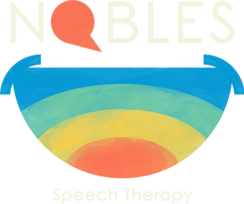We accept CareFirst BlueCross BlueShield, United Health Care, Wellpoint, Maryland Physician Care Insurance, and Kaiser Permanente.
Voice Therapy Kids Enjoy
Get a kid-friendly evaluation, diagnosis and treatment plan for vocal quality, pitch, and loudness disorders.
Children with voice issues may have trouble communicating with peers, leading to feelings of frustration or other behavior issues. Speech therapy for children is effective in treating voice problems and may help to restore a normal voice.
Speech Therapy for Ages 1-18
Share this page with a friend:
Voice Is an Important Part Of Identity
Have you ever had the experience of losing your voice or having your voice change due to a temporary sore throat or cough? It is difficult to go through just a few days with a hoarse or strange-sounding voice.
If your child’s voice is affected in somehow and doesn’t represent their age, background, or culture appropriately, it can cause you some concern. For your child, an ongoing voice problem can cause them to feel different from other kids. It can also mean they have trouble being heard and understood.
They might be having
problems with other children
because their friends and classmates don’t understand why your child sounds different.
Voice therapy empowers your child by helping them sound and feel better.
There are a number of reasons why a child may need help with their voice. It could be that their voice sounds constantly strained and raspy, or overly loud. On the other end, it could be that their voice is soft or squeaky and hard to hear.
When a child has voice issues, they may withdraw from participating in class or interacting with friends. When communicating is hard, it is easy for children to get frustrated and even act out due to their communication challenges.
Speech Therapy for Voice Disorders
A voice disorder is a disorder when vocal quality, pitch, and loudness contrast inappropriately with an individual’s age, background, and/or culture.
As Speech-Language Pathologists (SLPs), we are trained to recognize problems in an individual’s vocal quality or the structures that are used to produce sounds. We provide strategies of treatment to help improve your child's vocal quality.
Diagnosis and Treatment of Voice Disorders
The treatment of a voice disorder depends on several factors, such as the age of the child, type of disorder, and cause of the disorder, and often a combination of strategies is used. Speech-Language Pathologists are well-equipped to assess a child’s voice, develop a treatment plan, and connect with other medical professionals if needed.
How do you know if your child has a voice disorder?
Some common signs of a voice disorder are:
- Difficulty holding a voice note
- Hoarse or Whisper vocal quality
- Pain when talking
- Voice loss throughout the day
Some possible causes are:
- Acid reflux
- Anatomical factors (e.g., vocal nodules)
- Excessive Throat Clearing
- Talking for Long Periods of Time
- Yelling or talking loudly
Parents should also trust their instincts. No one knows your child better than you. If you think your child might have a voice disorder, having an SLP assess your child can help to pinpoint the issue or put your worries to rest.
Get Started Today!
Take the Next Step to Improve Your Child's Speaking Skills.
The initial consultation is confidential and there is no obligation!
Treatment for Voice Disorders in Children
Pediatric voice disorders diagnosis and treatment use similar methods to those used for adults. The difference is that when working with children, we concentrate on using child-friendly language. We also include you and other caregivers in the session. This way kids look forward to treatment, and you can learn how to continue to support your child at home.


Types of Pediatric Voice Disorders
There are several voice disorders found in children, and of these the most common is vocal hyperfunction or muscle tension dysphonia. Those are some big words. What do they mean?
We all have vocal folds, also known as vocal cords, in our throats. These vocal folds are the muscles that help us to speak. If these muscles have been working too hard, they may not produce sound as they should, and they may even grow little bumps, called nodules. This can cause an ongoing hoarse or raspy voice.
We should note here that if your child is having difficulty breathing, or if there is a noise when the child breathes in, this could be something more serious. Any type of airway or swallowing difficulties should be evaluated and treated immediately.
Benefits of Voice Disorder Treatment
Voice therapy can provide long-term relief by helping your child learn to speak in a way that avoids straining their vocal folds. Just like learning to brush your teeth can make your teeth healthier, learning good “vocal hygiene” can help your voice to be healthier too.
When the quality of a child's voice improves, their schooling, behavior, and interaction often also improve.


Resonant Voice Therapy
This type of voice therapy is just one example of the methods that may be used for treatment. The resonant voice method trains a child’s attention to pick up what he or she hears or feels while producing sounds and speaking. Through play and hands-on activities, resonant therapy can be used to teach children how to care for their voices and how to use specially focused vibrations while speaking.
The goal of resonant voice therapy is to achieve the strongest, clearest possible voice with the least strain on a child’s vocal folds. This has the result of decreasing the strain on the vocal folds and improving a child’s overall vocal health.
Speech Therapy Goals for Voice Disorders
When you talk to an SLP about treatment for a voice disorder they may talk about the goals of the therapy. These goals can include returning to or developing a normal voice; however, isn’t always possible. In those cases, speech therapy can still help. By assisting the child to limit their voice's unnecessary straining, pain, stress, and discomfort can be reduced.
Therapy for voice disorders shouldn’t be thought of as a chore. Children’s voice therapy can be rewarding, meaningful, and fun.

How Pediatric Voice Therapy Works
Step 1. Schedule Initial Consultation
We'll have a brief call to discuss your concerns about your child's communications skills, developmental milestones, red flags, and other areas of assessment.
Step 2. Assessment
We evaluate your child to industry-standard speech and language development benchmarks. Based on the results, we create a step-by-step treatment plan built around your child's needs.
Step 3. Treatment
We implement the treatment plan in series of fun, 30-minute one-on-one in-person or virtual sessions with your child. You'll receive updates after each session with supplemental materials for practice and reinforcement.
Step 4. Results
You'll experience the joy of watching your child's confidence, interpersonal interactions, and communication transform as building blocks are mastered throughout the treatment plan.
Get Started Today!
The initial consultation is confidential and there is no obligation!
Speech therapy aims to improve your child’s ability to communicate. This leads to greater
self-esteem, increased
confidence, and better
social skills.
Myles Nobles is a nationally certified speech-language pathologist. He holds a master’s degree and several other certifications all specializing in communication and speech-language pathology.
Mr. Nobles chose to specialize in speech therapy for children in the hope of making a difference in his community. Patience and perseverance allowed Myles to build his knowledge as an SLP, and he puts that same effort to work for your child.
Take the Next Step to Your Child Communicating More Clearly
Request a initial consultation to improve your child’s vocal quality, pitch and loudness.
Related Topics:







